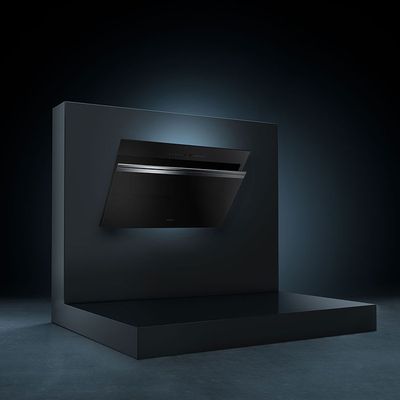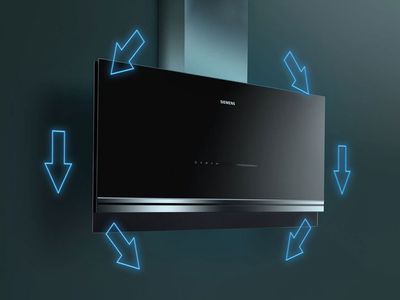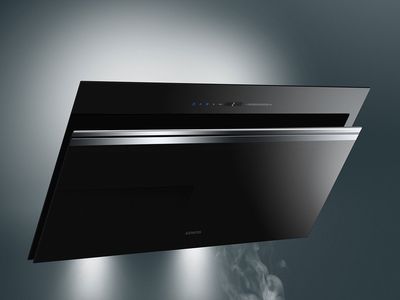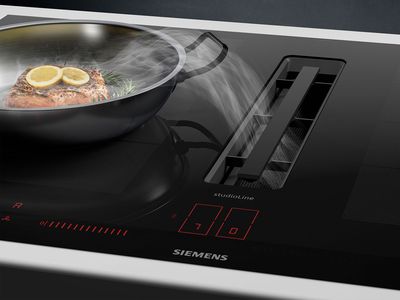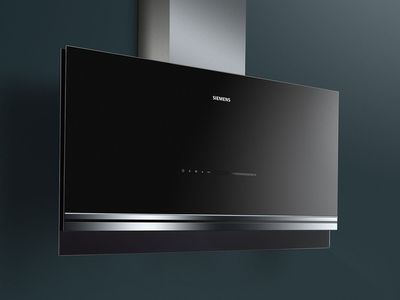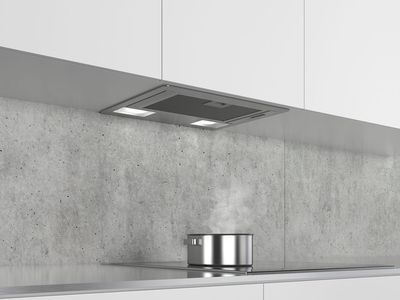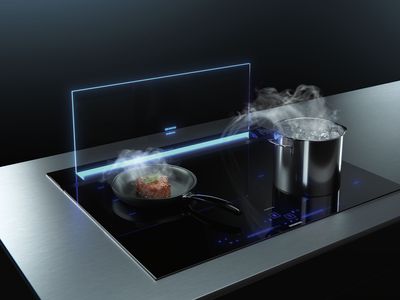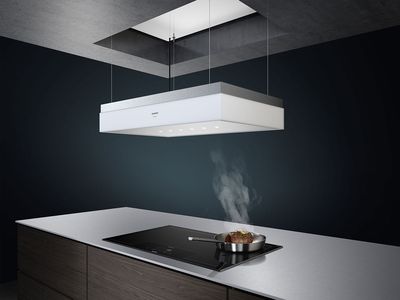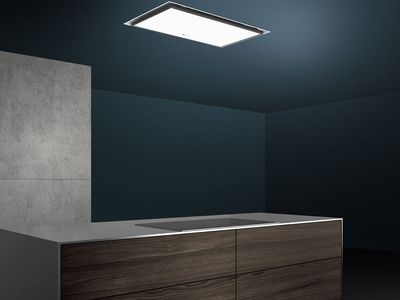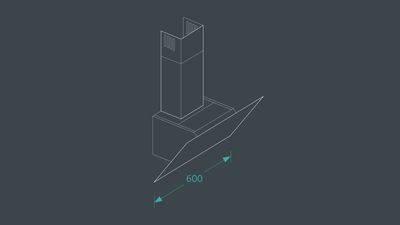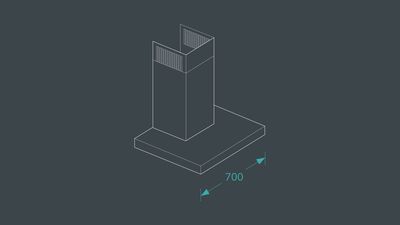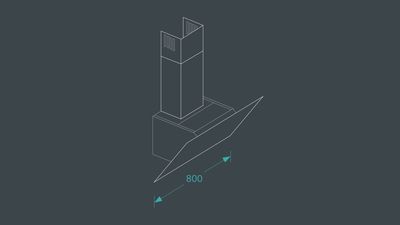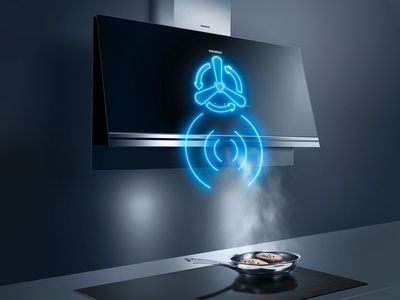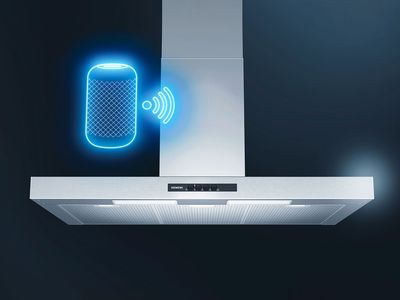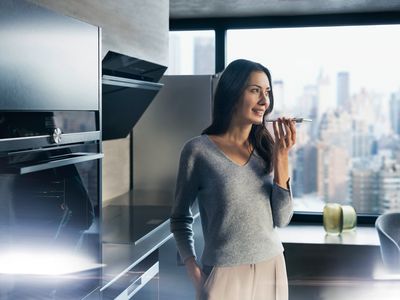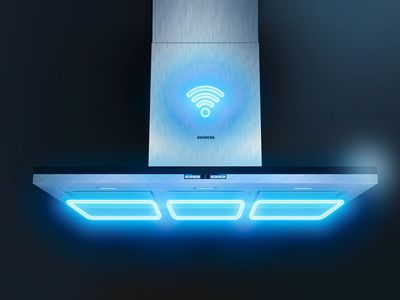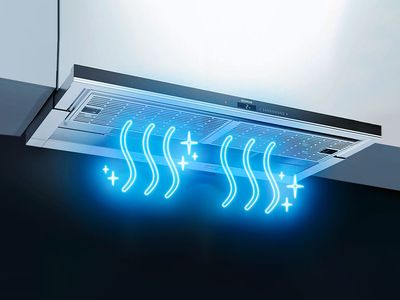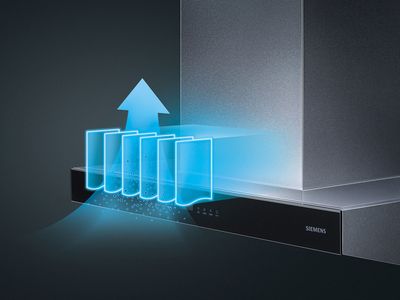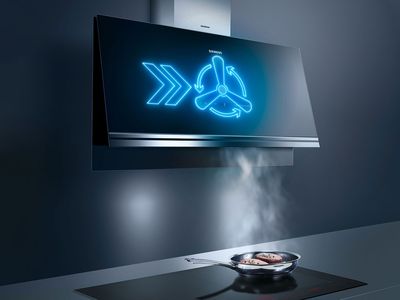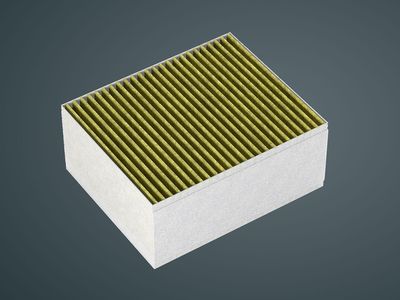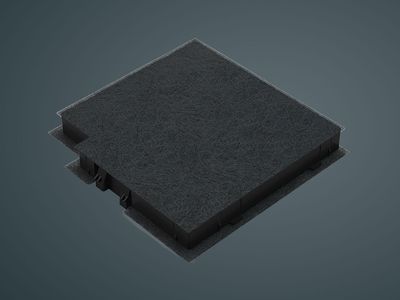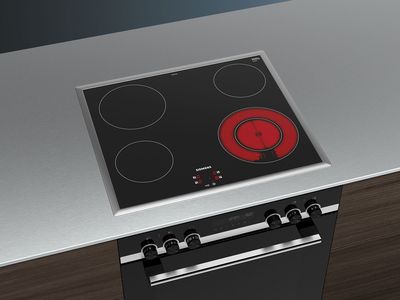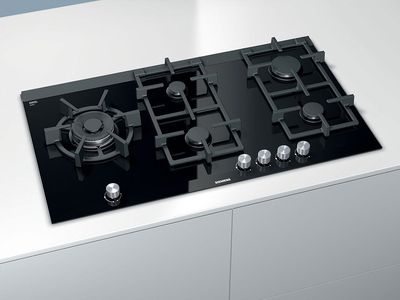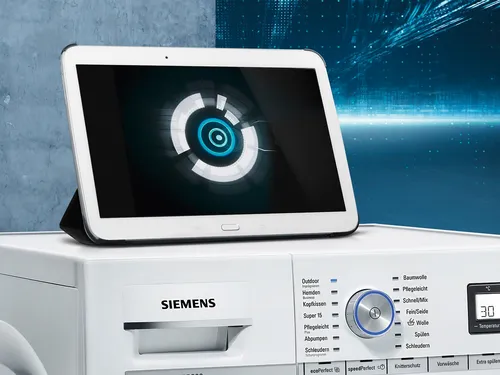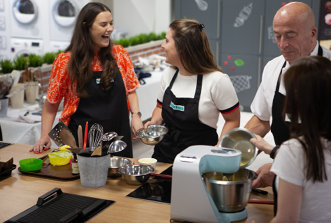Cooker hoods come in all shapes and sizes. To find one that best suits your needs: compare the benefits between ducted and recirculated extractor hoods, weigh up your design and installation options, match the size to your hob and kitchen, consider noise levels, and see what innovative features are available. This helpful cooker hood guide answers the most common questions on cooker hoods:
- Ductless vs recirculation: which cooker hood is best for you?
- What type of cooker hood should I buy?
- Which island cooker hoods are best for me?
- Power levels: how many cfm do I need for my range hood?
- What size cooker hood do I need?
- Cooker hood noise levels
- What innovative features does Siemens offer?
- What type of filters are there?
- How high should a cooker hood be?
What type of cooker hood should I buy?
Whilst all extractor hoods are effective, the specific type you need will depend on the layout of your kitchen, installation requirements and your design preference. Island hobs can be fitted with the following types of kitchen island hood: a ceiling hood, island chimney hood, downdraft hood or vented hob. While built-under hoods, canopy hoods, integrated design hoods, telescopic hoods, wall chimney hoods and vented hobs are suitable for standard kitchens.
Which island cooker hoods are best for me?
To find out which cooker hood is right for your island hob, consider these key differences. Downdraft hoods and vented hobs are the perfect solution for keeping your kitchen design and sightlines clear. Discreet and most quiet they extract the cooking smells directly at the source but take up some space beneath the worktop. The ceiling cooker hoods, ideal if your hob is the centre of your room, can either be bold design statements installed over an island unit or blend as unobtrusively into the ceiling as standard kitchen lighting. Finally, island chimney hoods are big and bold. These eye-catching hoods are typically used in large open-plan kitchens.
A downdraft cooker hood is a retractable ventilation system that is integrated into the kitchen worktop. It sits beneath the hob, drawing steam, fumes and grease downward.
What size cooker hood do I need?
To keep your kitchen free of smoke and odours, your cooker hood must be at least the same width as your hob. However, 1.5 times wider is the ideal size. You should also make sure the extraction rate of the hood is sufficient for the size of your kitchen. Sizes include 52cm, 53cm, 60cm, 70cm, 73cm, 75cm, 80cm and 90cm.
Power levels: how many cfm do I need for my range hood?
The power of a cooker hood, how much air it can extract, is measured in cubic feet per minute (CFM). The minimum hood CFM required for a standard width electrical hob (60cm) is 600CFM. However, the same size gas hob will give off more heat and therefore need more power. Of course, larger hob sizes and bigger kitchens will need an even higher CFM rating. The CFM requirement is also affected by duct size, starting at 400 CFM for the smallest and exceeding 1200 CFM for the largest ducts.
Cooker hood noise levels
Since cooker hoods are designed to create a comfortable cooking environment, noise level is an important consideration. The average cooker hood has a noise level of between 60 – 70 decibels. Anything above this is likely to be distracting.
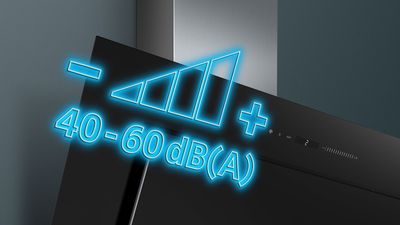
What is the quietest range hood?
Any range hood with a sound output of between 40 – 60 decibels is considered to be very quiet.
What innovative features does Siemens offer?
What type of filters are there?
There are three main types of extractor hood filters; fleece filters, metal grease filters and odor filters (also called activated carbon filters). Fleece filters are simple grease filters used in a few, mostly older, Siemens cooker hood models, while metal grease filters are used in both circulating air and exhaust air systems. Odor filters / activated charcoal filters are only used in recirculation mode to remove bad odors from the cooking vapors.
How high should a cooker hood be?
The amount of clearance required depends on which type of hob you choose. For standard electric, ceramic and induction hobs, your cooker hood should be between 55 – 70cm high while gas hobs need a clearance of at least 65cm – and more for larger appliances.

